You are using an out of date browser. It may not display this or other websites correctly.
You should upgrade or use an alternative browser.
You should upgrade or use an alternative browser.
Crazy Storm Weather and Lightning - Global
- Thread starter mabar
- Start date
Here is an image of the storm, they call Freddy, near Mozambique from Meteo.fr
TROPICAL CYCLONE FREDDY HAS AN HONOUR'S LOOK- 09/03/2023 - 12 H 00 UTC

Note that this area is not so far from the grand chamber collapse that happened in 2018 with a center near the island of Mayotte between Mozambique and Madagascar. For a review of the earthquake situation in Africa, including this part, see this post in the comments to the latest session. A cyclone is also an electrical phenomenon... will anything else will happen this year?
TROPICAL CYCLONE FREDDY HAS AN HONOUR'S LOOK- 09/03/2023 - 12 H 00 UTC
It is a bit confusing, because two weeks ago:Image from the METEOSAT-9 satellite, 03/09/2023 at 12:00 UTC: tropical cyclone Freddy continues its impressive journey. He is on the way to breaking the longevity record, held by John in 31 days (1994). Developed off the coast of Australia, it has crossed, over approximately 10,000 km, the entire Indian Ocean from east to west, touching Mauritius, Reunion then Madagascar, the French island of Europa and Mozambique. This type of very zonal trajectory is rare, and what is even more so is its loop in the warm waters of the Mozambique Channel, leading it to turn back towards the African continent.
Mozambique – Thousands Displaced as Cyclone Freddy Brings Flooding Rain
28 FEBRUARY, 2023
At least 7 people have died and thousands have been displaced after Tropical Cyclone Freddy made its way across Mozambique. Prior to reaching Mozambique, the storm caused widespread wind damage…
Maybe some papers will be published later that discuss the details.Madagascar – Thousands Displaced by Tropical Cyclone Freddy
23 FEBRUARY, 2023
Over 8,000 people have been displaced in Madagascar after Tropical Cyclone Freddy made its way across the country from 21 to 22 February 2023. the storm is expected to make…
Note that this area is not so far from the grand chamber collapse that happened in 2018 with a center near the island of Mayotte between Mozambique and Madagascar. For a review of the earthquake situation in Africa, including this part, see this post in the comments to the latest session. A cyclone is also an electrical phenomenon... will anything else will happen this year?
Last edited:
Flooding in California begins.
● No rest for Turkey, now flooding
Floods caused by torrential rains have hit two provinces that were devastated by last month’s earthquake, killing at least five people and increasing the misery of thousands who were left homeless, officials said.
A number of other people were reported missing as well in Wednesday’s floods.
One person was killed in the town of Tut in southeastern Adiyaman province, where surging waters swept away a container home where a group of earthquake survivors were living, Governor Numan Hatipoglu said. Four people were reported missing.
Four other people were killed and two firefighters were reported missing from the floods in neighbouring Sanliurfa province, Governor Salih Ayhan told HaberTurk television.
Several people were evacuated from a drenched campsite in Sanliurfa where earthquake survivors were sheltering in tents. Patients were also evacuated from a hospital, HaberTurk reported.
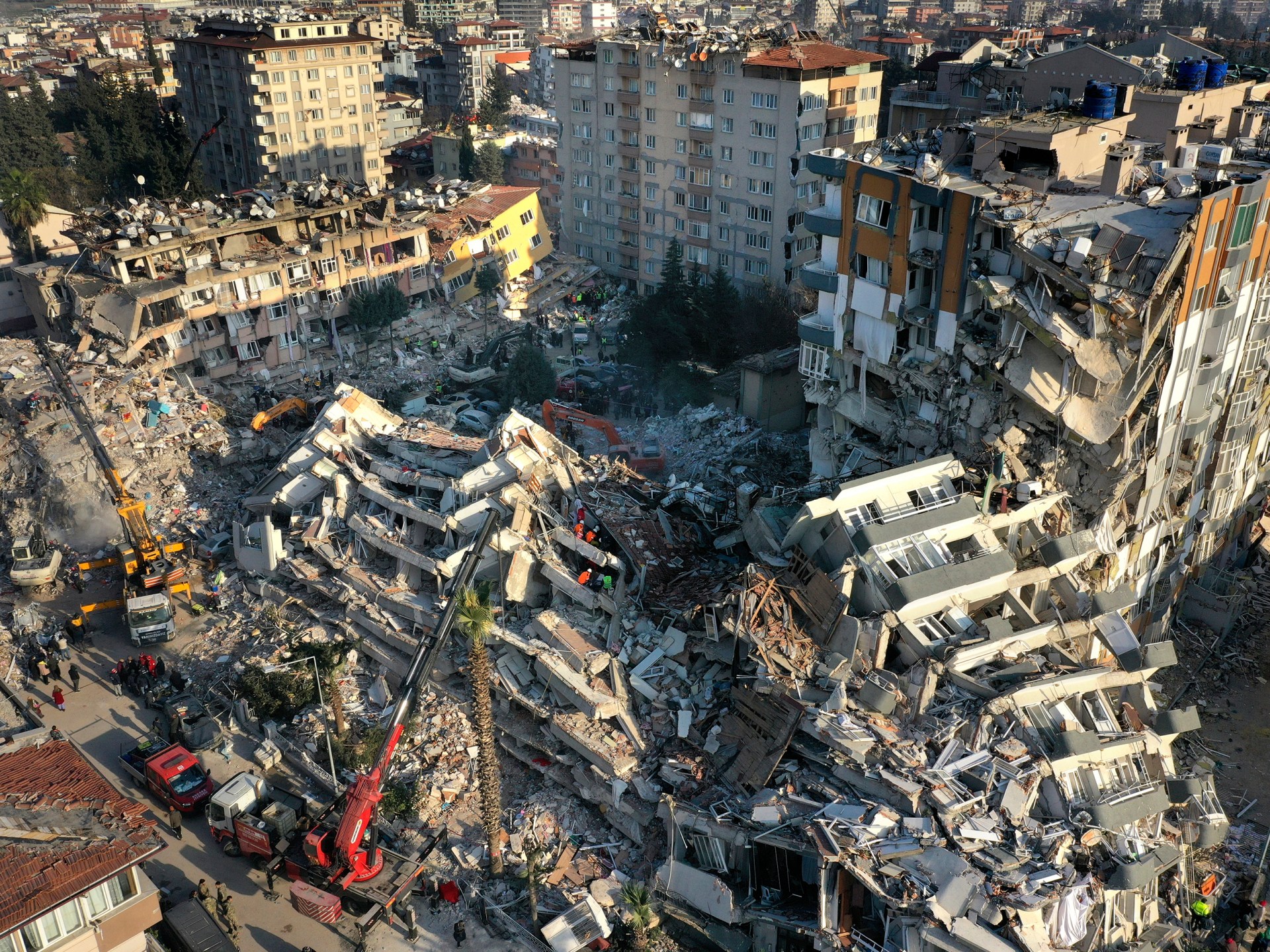
 www.aljazeera.com
www.aljazeera.com
● Peru
Unusual Cyclone Yaku, hitting near Motupe, Lambayeque, north coast of #Peru. March 13, 2023
Red alert in Lima: They woke up in mud and, although cyclone Yaku is moving away, rains will continue
On red alert and many fearing that the 'deluge' will end in catastrophe. Metropolitan Lima increased its alert level yesterday, from orange to red (extreme), reported Senamhi, due to "rains of strong to extreme intensity in a large part of the Lima region", due to indirect influence of cyclone Yaku. This cyclone is already moving away from our coasts, but Senamhi specialists have explained that the rains will still continue.
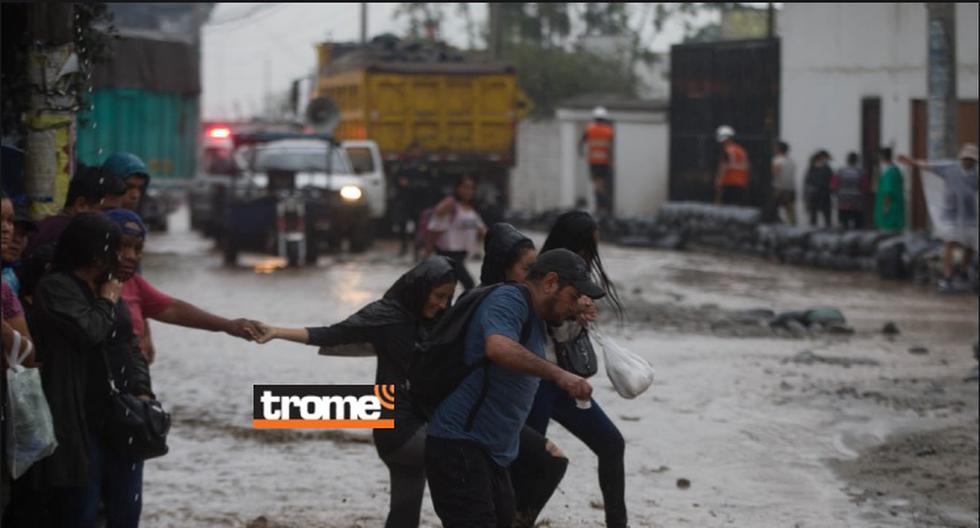
 trome.com
trome.com
State of emergency continues in regions of Peru
After the passage of cyclone #Yaku, heavy rains continue in #Peru causing rivers to overflow. Like this today the Chillon river. Classes suspended in Lima, Callao and Lima Provinces.
Turkey floods kill five in earthquake-affected provinces
Floods caused by torrential rains have hit two provinces that were devastated by last month’s earthquake, killing at least five people and increasing the misery of thousands who were left homeless, officials said.
A number of other people were reported missing as well in Wednesday’s floods.
One person was killed in the town of Tut in southeastern Adiyaman province, where surging waters swept away a container home where a group of earthquake survivors were living, Governor Numan Hatipoglu said. Four people were reported missing.
Four other people were killed and two firefighters were reported missing from the floods in neighbouring Sanliurfa province, Governor Salih Ayhan told HaberTurk television.
Several people were evacuated from a drenched campsite in Sanliurfa where earthquake survivors were sheltering in tents. Patients were also evacuated from a hospital, HaberTurk reported.

Turkey floods kill five in earthquake-affected provinces
At least five people were killed and a number of other people were reported missing in two provinces hit by earthquake.
● Peru
Unusual Cyclone Yaku, hitting near Motupe, Lambayeque, north coast of #Peru. March 13, 2023
Red alert in Lima: They woke up in mud and, although cyclone Yaku is moving away, rains will continue
On red alert and many fearing that the 'deluge' will end in catastrophe. Metropolitan Lima increased its alert level yesterday, from orange to red (extreme), reported Senamhi, due to "rains of strong to extreme intensity in a large part of the Lima region", due to indirect influence of cyclone Yaku. This cyclone is already moving away from our coasts, but Senamhi specialists have explained that the rains will still continue.

Huaicos, rescates, alerta roja en Lima: Amanecieron entre lodo y, aunque ciclón Yaku se aleja, lluvias seguirán
Suspendieron clases en Lima y Callao. Deslizamientos mantienen en vilo a Ancón, Chosica, Chaclacayo, Punta Hermosa y Puente Piedra. Regiones siguen sufriendo, sobre todo en el norte peruano.
State of emergency continues in regions of Peru
After the passage of cyclone #Yaku, heavy rains continue in #Peru causing rivers to overflow. Like this today the Chillon river. Classes suspended in Lima, Callao and Lima Provinces.
Floodlist.com carried this update:Here is an image of the storm, they call Freddy, near Mozambique from Meteo.fr
Malawi and Mozambique – Dozens Dead After Storm Freddy Triggers Floods and Mudslides
14 MARCH, 2023 BY RICHARD DAVIES IN AFRICA, NEWS
At least 99 people have died after Tropical Cyclone Freddy caused floods, mudslides and wind damage in parts of Malawi. Earlier the storm had made a second landfall in Mozambique, where disaster authorities report at least 10 people have died and thousands have been displaced.
Freddy has been a named tropical cyclone for over 30 days as it crossed the entire South Indian Ocean and travelled more than 8,000 kilometres, affecting Mauritius and La Réunion on its long journey en route to making landfall in Madagascar on 21 February 2023.
The storm then spent several days tracking over Mozambique, bringing heavy rains and flooding. Freddy then remarkably looped back towards the Mozambique Channel and picked up energy from the warm waters and moved towards the southwestern coast of Madagascar, causing further flooding and damages on 05 March, before returning back towards Mozambique for a second time, and then on to Malawi.
Damage caused by Cyclone Freddy in Malawi, March 2023. Photo: Malawi Red Cross Society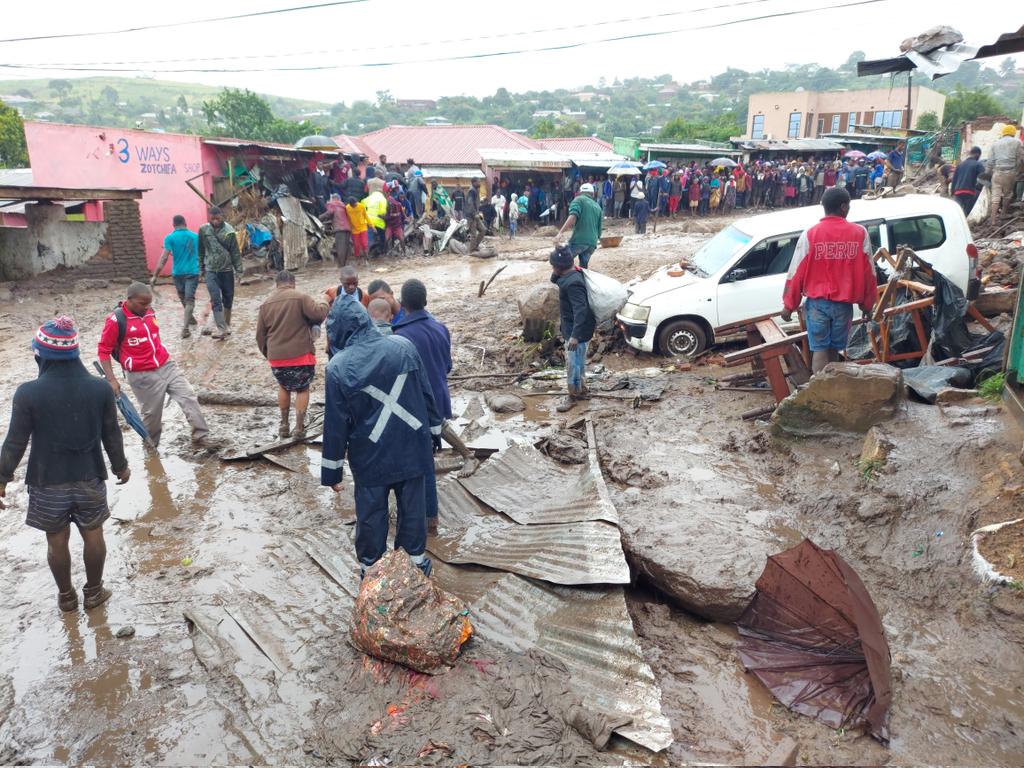
Madagascar
After staying for several days in Mozambique, the Tropical Cyclone Freddy weather system re-emerged in the Mozambique Channel on 02 March 2023 and then approached the southwestern coast of Madagascar.
Disaster authorities in the country reported at least 10 people died and three were missing after Freddy brought heavy rains to the southwest of the island from 05 March.
Over 72,600 people were affected by the storm’s second impact, including 24,300 who were displaced in the regions of Menabe and Atsimo Andrefana, according to reports by the National Bureau of Risk and Disaster Management (BNGRC). It is estimated that about 12,400 houses (6,000 flooded, 900 damaged and 5,500 destroyed) and 280 classrooms (158 destroyed, 67 damaged and 55 without roofs) were affected, leaving nearly 28,000 students without access to education.
This brings Freddy’s death toll in Madagascar to 17 (07 from the first landfall on 21 February and 10 from the latest rains), with nearly 299,000 people affected (226,000 in the southeast, and over 72,600 in the south-west). The UN said that an estimated 148,000 are in need of humanitarian assistance.
Floods in Mozambique following Cyclone Freddy, March 2022. Photo: WFP Mozambique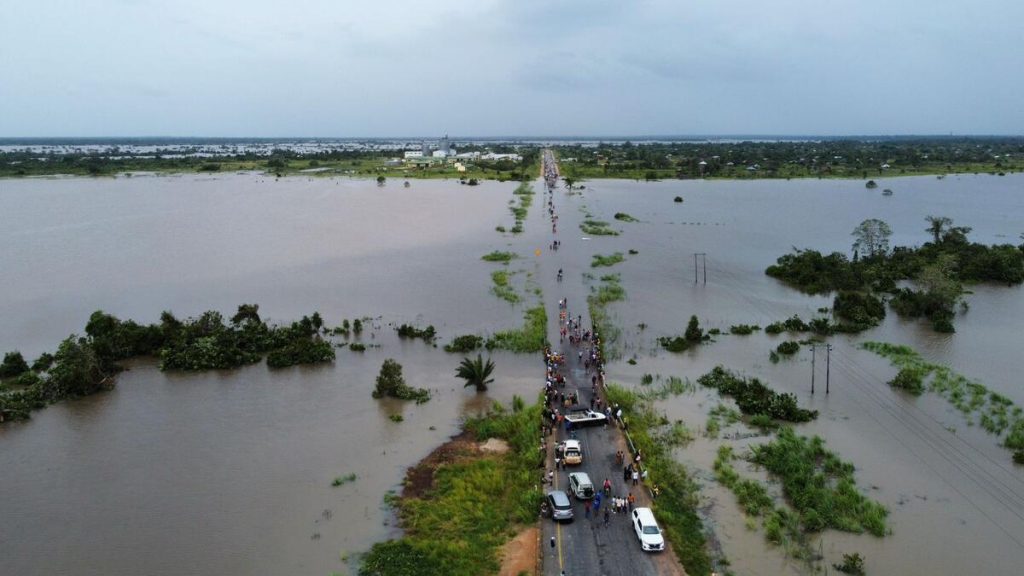
Mozambique
Freddy made its second landfall in Mozambique as a severe tropical cyclone during the evening of 11 March 2023 in the district of Namacurra, Zambézia province, with maximum winds of 148 km/h and gusts up to 213 km/h.
Rainfall of 200 to 300 mm was expected, with as much as 400-500 mm expected in areas close to the landfall location. This is more than twice the usual monthly rainfall in a matter of days.
Mozambique’s National Institute for Disaster Risk Management and Reduction (INGD), reported 10 fatalities in Zambézia Province, as of 13 March. A further 14 people were injured. INGD said 832 houses were destroyed and 1,050 damaged, mostly as a result of strong winds. Fourteen health centres were also damaged or destroyed, along with stretches of roads which were impassable in 9 locations. Thirty-five evacuation centres were accommodating 22,116 people from over 4,000 families.
The World Food Programme in Mozambique also reported heavy rains have damaged several houses forcing families to move to accommodation centres in Mutarara in Tete province in central Mozambique.
Previously, over 170,000 people were affected by heavy rains and floods following Storm Freddy’s first landfall in the country, in Inhambane province on 24 February. A total of 10 people lost their lives, 10 were injured and 5,100 were displaced. More than 30,000 houses were affected, including 14,600 which were damaged, 1,900 destroyed and 13,500 flooded, according to the National Institute for Disaster Management (INGD) as of 06 March. An estimated 56,900 hectares of crops were damaged.
The United Nations said that the confluence of the multiple crises of Tropical Cyclone Freddy – flooding in southern and central areas including in the capital Maputo, and rising cholera cases – is compounding a severe humanitarian situation in Mozambique.
As of 12 March, the cumulative number of cholera cases stood at 8,465 cases across 32 districts. This is an increase of 1,114 in the last week.
Floods in Mozambique following Cyclone Freddy, March 2022. Photo: WFP Mozambique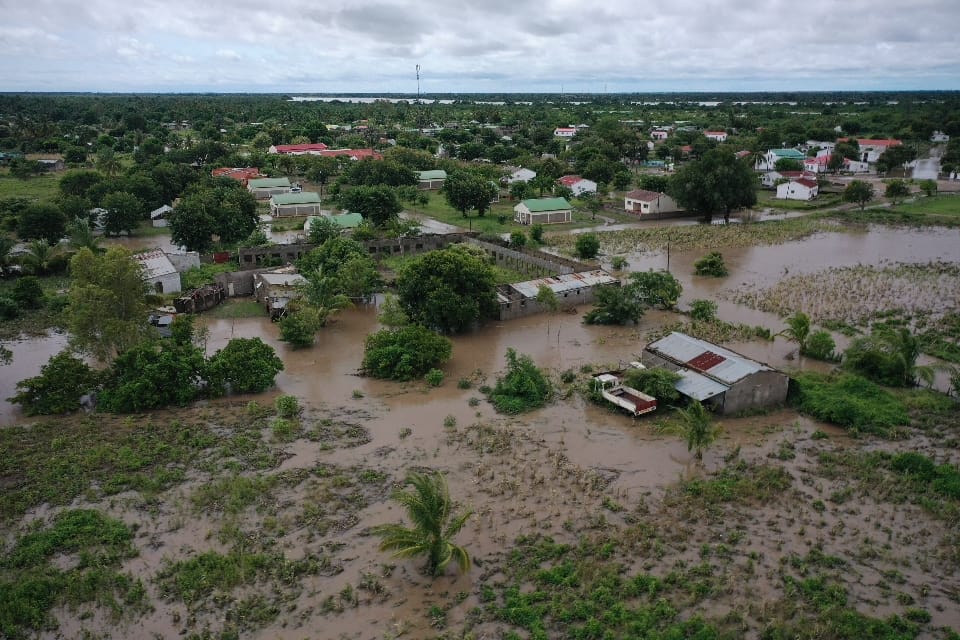
Malawi
Tropical Cyclone Freddy entered Malawi on 12 March 2023 near the city of Nsanje in the Southern Region.
On 13 March, the Department of Disaster Management Affairs (DoDMA) in Malawi reported flooding, mudslides and strong winds caused damage in Blantyre, Chikwawa, Chiradzulu, Mulanje, Nsanje, Phalombe and Thyolo District Councils.
In total, 99 deaths have been recorded with 16 people reported missing. Currently, councils are conducting assessments to establish the full extent of damage and assist all those in need.
Reports from Blantyre District indicate that 85 people have died and 134 people have been injured following Freddy-induced heavy rains and mudslides, DoDMA said. The reports further indicate that 16 people are missing and that 300 households (approximately 1,350 people) people have been affected; out of which 46 households (approximately 207 people) have been displaced and have sought refuge at Manja Camp and Naotcha Primary School.
In Blantyre City, the council has recorded 10 deaths, with nine registered in Ndirande Township. In Chikwawa, 1,112 households (approximately 5,004 people) have been displaced with one death and three injuries recorded. Around 1,300 households (approximately 5,850 people) have been displaced in Nsanje, with one death recorded. In Chiradzulu, 170 households (approximately 765 people) have been affected, with two deaths and two injuries recorded.
In Thyolo District, the council reports that 11 households (approximately 50 people) have been displaced. Three people were injured in Phalombe.
Meanwhile, the department, humanitarian partners and councils are facilitating the provision of relief assistance to affected and displaced households, with search and rescue operations led by the Malawi Defence Force, the Malawi Police Service, the Department of Marine and the Malawi Red Cross Society.
“DoDMA has readily available relief items in strategic places and has since dispatched the items for use by displaced and affected communities. At Manja and Naotcha camps, the department, in collaboration with humanitarian partners; has provided blankets, maize flour, beans and soya pieces,” the Department said.
Record-Breaking Cyclone
In a report of 11 March 2023, the World Meteorological Organization (WMO) described Freddy as a “remarkable storm”.
Freddy has been a named tropical cyclone for over 30 days, crossed the entire South Indian Ocean and travelled more than 8,000 kilometres, affecting Mauritius and La Réunion on its long journey en route to Madagascar.
“This kind of super zonal track is very rare. The most recent recorded cases were Tropical Cyclones Leon-Eline and Hudah, both in 2000, which like 2023 was a la Niña year,” WMO said.
WMO is monitoring whether Freddy will set a new record as the longest-lasting tropical cyclone. It is likely that the WMO Weather and Climate Extremes evaluation committee will set up an investigation after the cyclone has dissipated.
“The WMO Weather and Climate Extremes Archive are currently assembling a blue-ribbon international committee of scientists. Once the tropical cyclone has dissipated, these experts will begin a detailed examination of the raw data to determine if Freddy has indeed established a record as the longest-duration tropical cyclone on record. One question that we will be addressing is the fact that throughout its long lifetime, the storm has periodically weakened below tropical storm status. We will obviously need to address if that is a concern in our evaluation,” said Professor Randall Cerveny, WMO Weather and Climate Extremes rapporteur.
“Our evaluations are detailed scientific inquiries so they do take time,” he said.
The current record is held by Hurricane/Typhoon John, which lasted 31 days in 1994.
The accumulated cyclone energy (index used to measure the energy) is the equivalent of an average full North Atlantic hurricane season. According to NASA, Freddy has set the record for having the highest accumulated cyclone energy (ACE) of any southern hemisphere storm in history. ACE is an index used to measure the total amount of wind energy associated with a tropical cyclone over its lifetime.
“World record or not, Freddy will remain in any case an exceptional phenomenon for the history of the South-West Indian Ocean on many aspects: longevity, distance covered, remarkable maximum intensity, accumulated cyclone energy (ACE) amount, impact on inhabited lands … but it will be necessary to wait until the system ends its life cycle to make an exhaustive assessment,” said Sebastien Langlade, Head of Operations at RSMC La Réunion.
Some clips in Portuguese from the Televisão de Moçambique TVM can be found on their page and are uploaded to YouTube The people are occupied about the extent of the damages and the population is informed what the government is doing about the situation to help the people that are afflicted. Here are examples:
Ciclone Freddy desaloja duzentas famílias no Bairro Chuabo Dembe,
Cyclone Freddy displaces two hundred families in the Chuabo Dembe neighborhood
uploaded yesterday:
Ciclone Freddy obliterra distritos de Quelimane e Namacurra, na Zambézia
Cyclone Freddy obliterates the districts of Quelimane and Namacurra, in Zambezia uploaded two days ago.
Retorno do ciclone Freddy gera caos em Quelimane
Return of Cyclone Freddy creates chaos in Quelimane uploaded four days ago
Antony
Jedi Council Member
There will be a lot of ‘wonders’ on earth and in the sky (by memory -Cs)...
BUYAN - Чё там в мире?
🇴🇲 #Оман Пустыня Тумрайт в стране после сильного дождя превратилась в грязевое море. 😨
Tornado Causes Damage in Mississippi
Emergency workers were surveying the damage from a tornado that touched down in Mississippi on Friday night, the authorities said, as thunderstorms whipped across the state and into Alabama.
The tornado caused damage in Silver City and Rolling Fork, Miss., the National Weather Service office in Jackson said on Twitter. The agency issued rare tornado emergencies for parts of the state Friday night, indicating a life-threatening situation, along with several tornado warnings.
As midnight approached, the National Weather Service office in Memphis, Tenn., said that it was monitoring a tornado as it approached the town of Smithville, Miss. Todd Beal, a meteorologist at that office, said he was not sure if that tornado was the same one that had touched down earlier in Rolling Rock.
More than five million people in Alabama, Louisiana, Mississippi and Tennessee were under a tornado watch as of 11 p.m. local time. About 50,000 electricity customers in Mississippi and Tennessee had already lost power, according to the tracking site poweroutage.us.

Large Tornado Rips Through Mississippi (Published 2023)
The tornado blew out windows, damaged homes and trapped people in the town of Rolling Fork. “The town took a direct hit,” said a videographer who filmed the storm.
Violent #tornado reported tonight in #Mississippi #USA Severe damage to a wide road on Rolling Fork in Silver City #Mississippi.CAUTION report people trapped and search and rescue emergency underway.
● India
Powerful #Tornado captured from a village in #Fazilka #Punjab #India district
This is the 2nd tornado reported in Punjab in a week. Reports indicate that the frequency of tornadoes in India are increasing every year.
Mississippi updates.
Fortunately for us in TN we got just a capital rain storm and remnants of strong winds early in the morning.
Fortunately for us in TN we got just a capital rain storm and remnants of strong winds early in the morning.
Antony
Jedi Council Member
Tornado Causes Damage in Mississippi
Emergency workers were surveying the damage from a tornado that touched down in Mississippi on Friday night, the authorities said, as thunderstorms whipped across the state and into Alabama.
The tornado caused damage in Silver City and Rolling Fork, Miss., the National Weather Service office in Jackson said on Twitter. The agency issued rare tornado emergencies for parts of the state Friday night, indicating a life-threatening situation, along with several tornado warnings.
As midnight approached, the National Weather Service office in Memphis, Tenn., said that it was monitoring a tornado as it approached the town of Smithville, Miss. Todd Beal, a meteorologist at that office, said he was not sure if that tornado was the same one that had touched down earlier in Rolling Rock.
More than five million people in Alabama, Louisiana, Mississippi and Tennessee were under a tornado watch as of 11 p.m. local time. About 50,000 electricity customers in Mississippi and Tennessee had already lost power, according to the tracking site poweroutage.us.

Large Tornado Rips Through Mississippi (Published 2023)
The tornado blew out windows, damaged homes and trapped people in the town of Rolling Fork. “The town took a direct hit,” said a videographer who filmed the storm.www.nytimes.com
Violent #tornado reported tonight in #Mississippi #USA Severe damage to a wide road on Rolling Fork in Silver City #Mississippi.CAUTION report people trapped and search and rescue emergency underway.
● India
Powerful #Tornado captured from a village in #Fazilka #Punjab #India districttoday March 24.
This is the 2nd tornado reported in Punjab in a week. Reports indicate that the frequency of tornadoes in India are increasing every year.
In the US states of Mississippi and Alabama, at least 26 people were killed as a result of a devastating tornado, National Public Radio (NPR) reports.
Wind gusts reached 129 kilometers per hour, torrents of rain and large hail hit the affected areas. Hundreds of buildings were destroyed, thousands of homes were left without electricity.
Mississippi State Governor Reeves has declared a state of emergency. He also spoke with US President Joe Biden, the head of state offered the full support of the federal government after the hurricane, emergency response personnel and resources were sent to the state to assist in recovery work.
The National Weather Service reported that a serious weather threat to the affected areas remained until Saturday evening, and showers and thunderstorms are possible on Sunday.
In total, the tornado stretched for about 250 kilometers and lasted more than an hour. According to PowerOutage.us , as of Saturday afternoon, more than 40,000 customers were out of power in Mississippi, Alabama and Tennessee.
Antony
Jedi Council Member
In the US state of Arkansas, more than 600 people were injured due to two tornadoes.
More than 600 people were injured due to two tornadoes that struck the US state of Arkansas on March 31, CBS reports.
It is noted that the main impact of the disaster fell on the central part of the state, in particular on the administrative center of Little Rock and its surroundings. Currently, data on the severity of the condition of the victims are being clarified.
In connection with the incident, an emergency regime was introduced in the state, and the National Guard forces were also involved, whose purpose is to help in the elimination of the consequences of a natural disaster. According to the TV channel, more than 70 thousand Americans were left without electricity.

 m.lenta.ru
m.lenta.ru
More than 600 people were injured due to two tornadoes that struck the US state of Arkansas on March 31, CBS reports.
It is noted that the main impact of the disaster fell on the central part of the state, in particular on the administrative center of Little Rock and its surroundings. Currently, data on the severity of the condition of the victims are being clarified.
In connection with the incident, an emergency regime was introduced in the state, and the National Guard forces were also involved, whose purpose is to help in the elimination of the consequences of a natural disaster. According to the TV channel, more than 70 thousand Americans were left without electricity.

Более 600 человек пострадали из-за торнадо в американском штате
Телеканал CBS сообщил, что не менее 600 человек пострадали из-за двух торнадо, обрушившихся на американский штат Арканзас 31 марта. Основной удар стихийного бедствия пришелся на центральную часть штата, в частности на административный центр Литл-Рок, а также его окрестности.
Tornado Hits Little Rock; Gov. Sanders Declares State of Emergency
A tornado hit central Arkansas, including part of Little Rock, on Friday according to the National Weather Service.
At least 5 people are critically injured, and dozens more are injured.
The tornado caused catastrophic damage in the north part of the city, according to the NWS.
The twister tore first through neighborhoods in west Little Rock, and shredded a small shopping center that included a Kroger grocery store.
An employee at the Kroger store said, "It was unbelievable."
The employee told a reporter with KATV that everything happened in 5 seconds. He said when it ended he could see people bleeding and even a woman with a pipe piercing through her leg.
Members of the Little Rock National Weather Service were forced to take shelter from the storm.
Arkansas lawmakers did not meet at the State Capitol today. They have been taking Fridays off.
A tornado hit central Arkansas, including part of Little Rock, on Friday according to the National Weather Service.
At least 5 people are critically injured, and dozens more are injured.
The tornado caused catastrophic damage in the north part of the city, according to the NWS.
The twister tore first through neighborhoods in west Little Rock, and shredded a small shopping center that included a Kroger grocery store.
An employee at the Kroger store said, "It was unbelievable."
The employee told a reporter with KATV that everything happened in 5 seconds. He said when it ended he could see people bleeding and even a woman with a pipe piercing through her leg.
Members of the Little Rock National Weather Service were forced to take shelter from the storm.
Arkansas lawmakers did not meet at the State Capitol today. They have been taking Fridays off.
Tornadoes confirmed in southeast Iowa
Tornadoes were reportedly spotted in at least three Iowa counties Friday afternoon as storms raced across the southern half of the state.
Homes were apparently damaged by tornadoes that touched down near Ottumwa in Wapello County and in Keokuk County, where officials have told KCCI that properties near Hedrick, Ollie, Koeta and Martinsburg were affected.
Officials in Poweshiek County said there's no known damage after a tornado was spotted between Brooklyn and Malcom.
No serious injuries have been reported.
Tornadoes were reportedly spotted in at least three Iowa counties Friday afternoon as storms raced across the southern half of the state.
Homes were apparently damaged by tornadoes that touched down near Ottumwa in Wapello County and in Keokuk County, where officials have told KCCI that properties near Hedrick, Ollie, Koeta and Martinsburg were affected.
Officials in Poweshiek County said there's no known damage after a tornado was spotted between Brooklyn and Malcom.
No serious injuries have been reported.
